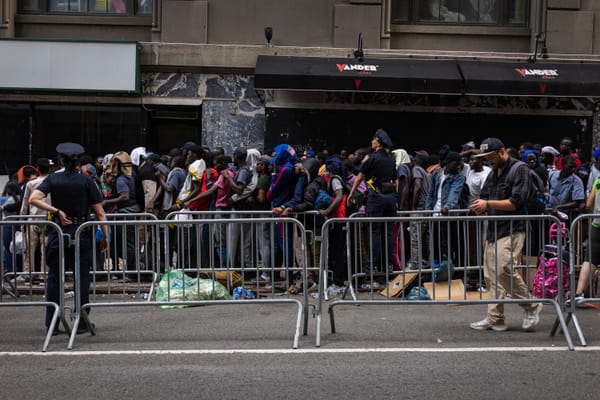‘This issue will destroy New York City.” That was New York City Mayor Eric Adams’s stark warning at a town hall on Sept. 6. He was referring to the flood of migrants from the southern border that has been straining budgets and facilities in the Big Apple. Democratic cities that proudly declared their “sanctuary-city status”—meaning they wouldn’t allow their police forces or government agencies to cooperate with federal immigration enforcement—are now demanding federal aid for the costs of the massive migration of people of many nationalities across the US-Mexican border, triggered by the Biden administration’s decision to scrap the “Remain in Mexico” policy, thus making it absurdly easy for foreign nationals to be admitted to the country by claiming they need asylum.
There is one thing that Democratic mayors in New York, Washington, and Chicago are not doing—and that is calling for a reduction in the numbers of immigrants waved in under various categories expanded by the Biden administration. Instead, Democratic urban politicians like Adams are merely calling on the federal government to subsidize the costs created by the influx and to make it easier for the migrants to join the urban labor force. To put it another way, Democratic cities want to nationalize and socialize the costs of mass low-wage migration, while localizing the benefits.
Doing so is in the cities’ self-interest. At a time when most domestic migrants are leaving core cities for suburbs and smaller towns, an international migration Ponzi scheme is the only thing that averts a demographic doom loop for cities like New York and San Francisco.
Big cities have been rare in human history. Before the First Industrial Revolution, huge conurbations were rare. Usually, they were political capitals like Rome or religious complexes like Babylon. They were “rentier cities,” with kings, aristocrats, or priests subsisting on taxes or tribute from the countryside, where most production took place.
